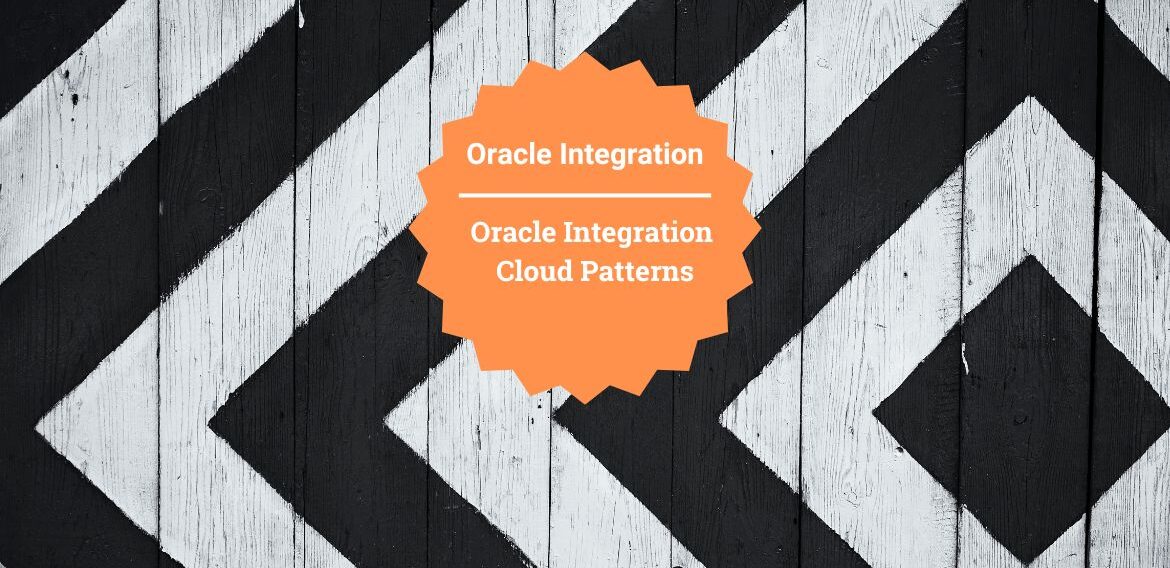Oracle Integration Cloud Patterns: OIC
Oracle Integration Cloud is a cloud offering by Oracle that simplifies the development of cloud and on-premises integrations. The integration development and operational life cycle is managed using a web based console without having to write a single line of code. Oracle Integration Cloud offers integration patterns allows us to exchange data between cloud and on-premises applications.
Have a look to short video on OIC design pattern
OIC offers Six integration patterns which help us to build from simple to complex integrations. When we choose to build an Integration, the starting point is to choose from the available patterns.

In this article, you will be learning Oracle Integration Cloud patterns.
Related blogs:
Oracle Integration Cloud Service Integrations
Oracle Integration Cloud Service Connections
Oracle Integration Cloud Service Lookups
Oracle Integration Cloud Service Mapping
Oracle Integration Cloud Service Agent
1. App Drive Orchestration
The Orchestration patterns allows you to create from simple to complex integration. Create an integration that uses an event or a business object to trigger. For example, create an integration with an Salesforce adapter as a trigger and Oracle Sales Cloud as a invoke. Salesforce sends an Outbound messages which triggers an OIC integration. Use this pattern when you wanted to create complex integration. In Orchestration pattern, we can invoke any available activity as below:
- For-Each activity to loop over the array element
- Switch activity for the multiple routes
- Scope activity to handle exceptions
- Ad-hoc mapping
- Wait activity to wait certain amount of time
2. Scheduled Orchestration
The pattern allows you to develop an integration which can be scheduled to run on pre-defined frequency as well as on ad-hoc basis. While using this pattern, a scheduled activity occurs as a trigger. For example, you add an initial invoke adapter to read a trigger file and a second FTP adapter to download the file for further processing. After designing this integration, you schedule when to run it. Use this pattern when you want to develop an integration which can run on some scheduled frequency.
3. File Transfer
This pattern create an integration to move the file across network. This is again a scheduled type of integration. Use this pattern when you wanted to move files from one FTP location to another.
4. Basic Routing
This help to create a very simple integration where you have single source and single target system with no logic and processing on data. Create an integration with a blank trigger and invoke in which to add your own adapters. You can also create a single routing expression and request and response enrichment’s, as needed. You cannot create multiple routing expressions. Use this pattern when you have single source and single target.
5. Publish to OIC
Oracle Integration Cloud, provide inbuilt messaging queues which you can leverage to publish and subscribe messages.
Create an integration in which you add a trigger adapter to publish messages to Oracle Integration through a predefined Oracle Integration Messaging invoke. No configuration of the invoke subscriber is required.
The publisher and subscribers participating in this integration pattern can be activated and deactivated independently of each other.
6. Subscribe to OIC
This pattern can only be used in conjunction of Public to OIC pattern.
Create an integration in which you add an invoke adapter to subscribe to messages from Oracle Integration through an Oracle Integration Messaging trigger. You are prompted to select the publisher to which to subscribe. You must have already created a publisher to which to subscribe. The publisher does not need to be active, but must already be completely configured.
Any business identifiers defined on fields in the published integration are copied to the subscriber. Any changes made to the published integration’s business identifiers after copying are not reflected in the subscriber. The publisher and subscribers participating in this integration pattern can be activated and deactivated independently of each other.
See the Official Oracle documentation for Common Integration Pattern Pitfalls and Design Best Practices

